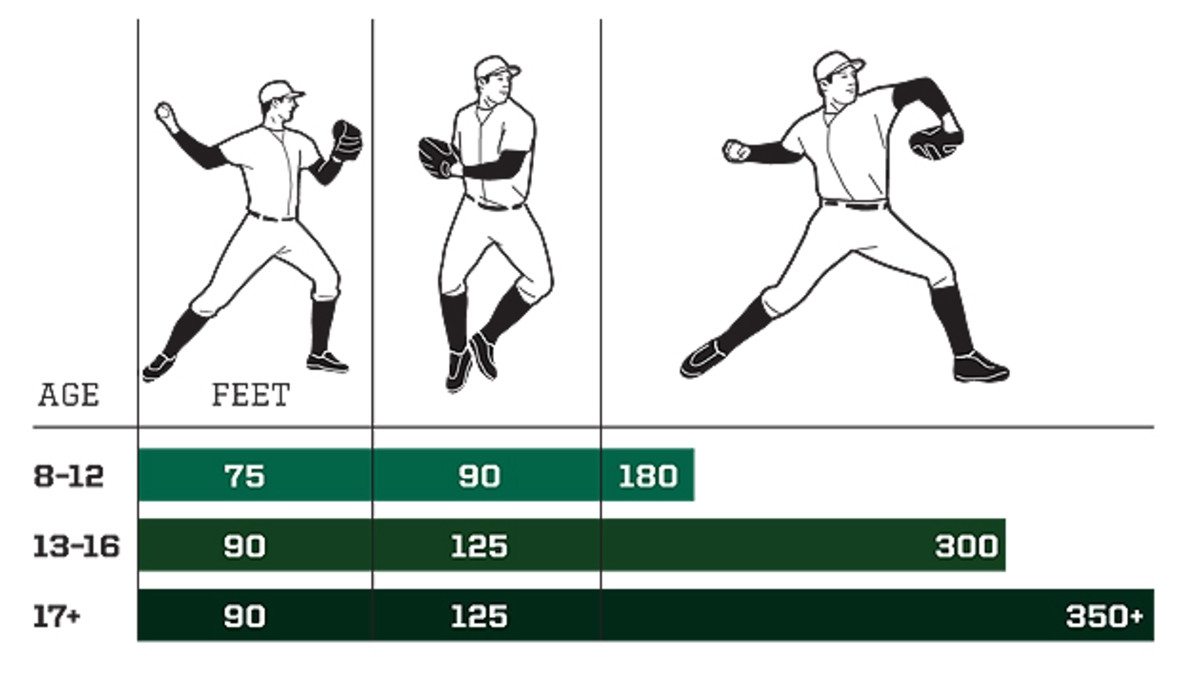Training with Trevor Bauer: Indians pitcher explains his throwing secrets

The noise inside a pitcher’s head can be deafening. Thinking about all the fine-tuning, the technical and mechanical instruction that goes into his craft on a daily basis. When the difference between an unhittable pitch and a meatball is a matter of inches, it can be difficult for a pitcher to tune it all out. And that’s one of the biggest reasons why Cleveland Indians righthander Trevor Bauer, as a high school and college pitcher, used to put on headphones, find a throwing partner, go into the outfield, and throw the ball as high and far as he could. It’s a practice known as long toss.
“With the music playing, it was almost like I wasn’t even thinking about anything,” Bauer said on Opening Day in Houston. “I mean, normally there’s all the things you’re told you need to work on. Or maybe you’re thinking to yourself, ‘My last outing was bad and I need to have a good next outing.’ The combination of the music and long toss was very therapeutic for me.”
Bauer, a 2011 first-round draft pick (third overall) of the Arizona Diamondbacks who’s now the Indians’ No. 3 starter, doesn’t wear headphones anymore—not in uniform, anyway—but he still loves to long toss, and does so 3-5 times per week during the season. His throwing partner is one of the Indians bullpen catchers, who sometimes has to stand over 400 feet away.
Science of nap time: Seeking an edge in the most basic of all human needs
“It’s done with a very fluid motion,” says Bauer, who landed in Cleveland as part of a three-team deal in December 2012. “It appears to be effortless because the body is very synced up. It’s not effortless. It’s actually max effort, but it can only happen when the body is connected. To launch a ball 300, 350 or 400 feet, it takes a high level of athleticism. That’s a big reason why I like it.”
Bauer’s words echo the mantra of Alan Jaeger, the man who’s known in baseball circles as the guru of long toss, and a self-proclaimed “non-scientific” expert. “Not a scientist,” Jaeger repeats. “But I've lived on the field as a teacher for 24 years, and as the thrower of a baseball for 35 years. You know in your bones exactly what happens when you long toss. You become an athlete. You stretch your arm out. You free yourself up to become natural.”
In other words, the antithesis of “mechanical.”
Bauer’s long toss story dates back to his pre-teen years, first when his dad would hit him grounders and flyballs and he’d throw the ball all the way back from where he’d caught it. As an 11-year-old, he attended one of Jaeger’s clinics in Southern California. That’s where he started making long toss a part of his routine. While stating there’s a right and wrong way to long toss: “Most important is that you listen to your body. Listen to your arm," says Bauer. "It shouldn’t hurt.” Bauer notes that as he’s learned to throw the ball farther, he’s naturally added velocity.
- MORE EDGE: Byron Jones: Jumping up in the NFL draft
“When I threw the ball 300 feet, that translated to about 80 miles per hour on the mound,” Bauer says. “As I’ve gotten to where I can throw a ball 420-ish feet, I’ve been able to hit 100.”
Long toss, as Jaeger teaches it, is somewhat controversial in pro baseball. A number of clubs limit their pitchers to throwing a maximum distance of 120-feet, insisting they only want to throw the ball on a line, not with a high-as-you-want-it arc, as Jaeger’s students do. They also limit long toss sessions to 10 minutes. Bauer says his long toss sessions can last up to 20-30 minutes, depending on how he feels, usually ending with a series of pitches thrown from 60 feet, 6 inches. When he throws from the mound, he tries to repeat the motion used to throw the ball a long way.
“Because his arm has such great strength, it’s allowed Trevor to really work at his craft,” Jaeger says. “Why? Because he can. He loves conditioning. Loves throwing. I think he realized at an early age that long toss allows him to not only throw with freedom and athleticism and arm strength, it allows him to throw a lot. For someone who likes to work, it doesn’t get any better.”
Long and Strong
Jaeger says there is no set number of throws or length of time to stay at each distance. The key is to "listen to your arm," says Jaeger. Each age group can start 10- to 20-feet apart and gradually move back, making the initial throws at approximately a 25-degree angle. In middle distances the thrower should incorporate a crow hop, using the legs to help take some strain off the arm. The final distance, which is an approximation, should use a 35-degree arc. After reaching the peak distance, throwers should come back in 10-foot increments with each throw while maintaining the same intensity. Once the arm is in shape, throwing three to five days a week is encouraged.

Working hard at the gym? Training for that first (or fifteenth) marathon? SI wants to train with you! Head to Twitter or Instagram, upload a photo of yourself getting fit and give us a little insight into why/what you train for. Include the hashtag #trainingwithsi and your photo could be featured in an upcoming issue of Sports Illustrated. Click here for Contest Rules.
